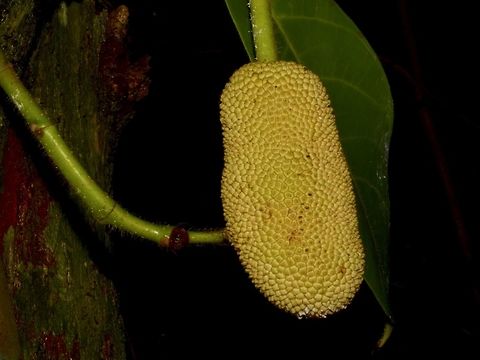
Appearance
Cempedak trees are large, evergreen trees. They can grow to a height of 20 m, although most only reach a dozen meters. The trees are monoecious, with male and female flowers growing on the same tree. There are many varieties, although few are named. The vigorously growing tree can bear heavy crops of fruit once or twice a year.Uses
The fruit is very popular in its native area, and is becoming so in Queensland. The flesh can be eaten fresh or after being processed. Fritters made by dipping arils in batter and frying in oil are sold in the streets of Malaysia. The seeds can be fried, boiled or grilled and then peeled and eaten with a little salt mixture. They taste is similar to water chestnuts. The young fruit, like young jackfruit, can be used as a vegetable.The wood is of good quality, strong and durable, so it is often used as building material for home furnishings or boats. The fibrous bark can be used to make ropes. Yellow dye can also be produced from the wood.
In Borneo, the skin of the cempedak can be processed into food called ''mandai'' or as some call it, ''dami''. ''Mandai'' is made by peeling the fruit until it looks white, then soaking it in brine to preserve and soften the texture. The fruit may be soaked for a few hours or even up to a month. ''Mandai'' is usually consumed by frying until brown.
References:
Some text fragments are auto parsed from Wikipedia.